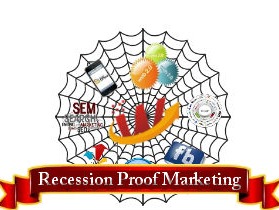
Meta Moves Towards Unified Data Metrics: What You Need to Know
In a bold shift to enhance the way data is presented, Meta is merging several metrics into its new 'Views' measurement, a move that follows a gradual transition from various metrics to focus on a more unified approach across its platforms. Starting from November 1, 2023, users of Meta’s Page Insights API will notice significant changes as the company phases out its traditional views on post engagements, particularly the demise of the ‘impressions’ metric.
Why the Change Matters
Meta’s goal is clear: to streamline how users understand and measure the performance of their content across Facebook and Instagram. By favoring 'Views' as a key metric, Meta aims to create a single distribution statistic that reflects all types of content interactions, from videos to images. As Meta points out, this move is not just cosmetic. It represents a comprehensive attempt to align user engagement behaviors with analytic data.
The Rise and Fall of Metrics
Traditionally, metrics such as ‘impressions’, ‘plays’, and ‘accounts reached’ painted a fragmented picture of user engagement. As users gravitated more towards passive consumption (like watching videos) over active interactions (like commenting), Meta recognized the need to adapt its data. This change offers a more concise way to track how users consume content across platforms—essential for marketers looking to understand engagement trends.
What’s Gone and What’s Here to Stay?
As ‘impressions’ bows out to make way for ‘views’, another key metric—the 'page fans' insight—will also be deprecated. This follows the recent migration of Facebook pages to a new experience and the complete removal of insights from the classic Pages. This is vital news for marketers heavily relying on these figures. As these changes take effect, third-party analytics platforms will reflect these updates, removing access to metrics linked to impressions and fans entirely.
Future Predictions: An Overhaul of Insights in Social Media
With all content measured under the same metric, what does the future hold? The elimination of disparate data points can improve clarity in content performance tracking, providing marketers with the simplicity they often crave. Expect brands to shift strategies significantly as they adapt to this new reality. We could even see a surge in content designed specifically for 'Views', enhancing the creativity and quality of posts as brands chase this singular success metric.
How to Adapt to the Changes
For businesses and social media managers, the swift adaptation to 'views' means recalibrating current strategies. Monitor how this new metric correlates with your content strategies, impacting your posts accordingly. Engage directly with these metrics to extract deeper insights: what type of content drives ‘all the views’? How do those numbers stack against previous metrics you're used to?
Actionable Tips to Enhance Your Social Media Strategy
- Prioritize video content as it tends to garner higher views and engagement.
- Experiment with different types of posts—photos, polls, video reels—to observe changes in views.
- Analyze content performance frequently to tweak your strategy in real-time, catering to trends emerging from the 'Views' data.
A Closing Thought: Embrace Change
Transitioning away from familiar metrics can be daunting, but for savvy marketers, this shift presents an opportunity. By focusing on a simplified way to measure engagement, businesses can better understand their audience and optimize their content strategies. As Meta continues to evolve, staying informed places your brand at the cutting edge of social media marketing.
 Add Row
Add Row  Add
Add 




Write A Comment